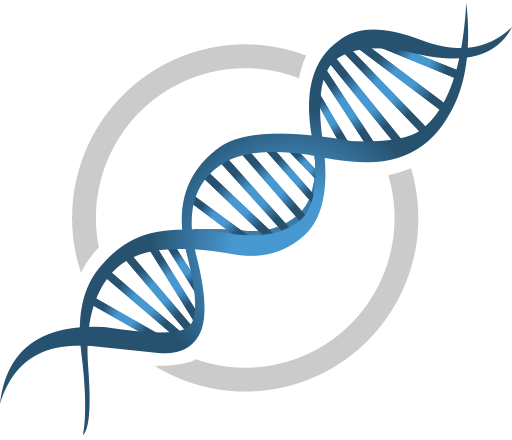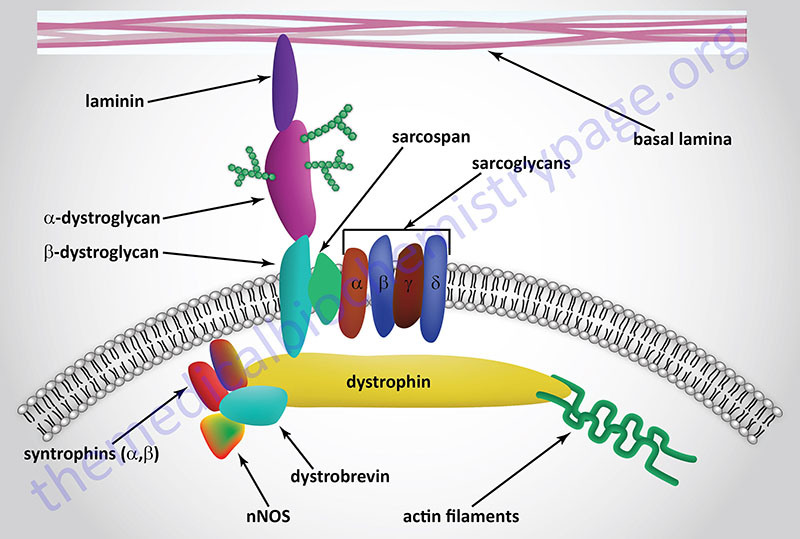Last Updated September 12, 2022
Introduction to the Muscular Dystrophies
The muscular dystrophies represent a group of nine characterized disorders, all of which are associated with some level of loss of muscle function along with atrophy of muscle tissue. These diseases are Duchenne muscular dystrophy (DMD), Becker muscular dystrophy (BMD), myotonic dystrophy (DM, for dystrophia myotonica), distal muscular dystrophy, Emery-Dreifuss muscular dystrophy, limb-girdle muscular dystrophy, oculopharyngeal muscular dystrophy, fascioscapulohumeral muscular dystrophy, and congenital muscular dystrophy. Myotonic dystrophy results from a trinucleotide repeat expansion (CTG) present in the 3′-untranslated region of the dystrophia myotonica protein kinase gene (DMPK).
The muscular dystrophies that are associated with defects in the gene encoding the intracellular protein, dystrophin (gene symbol, DMD), are known as Duchenne muscular dystrophy (DMD) and Becker muscular dystrophy (BMD). Given that the dystrophin gene is found on the X chromosome, both of these diseases are inherited in an X-linked manner.
Molecular Biology of Becker Muscular Dystrophy
Both DMD and BMD are caused by mutations in the gene (DMD) that encodes the protein dystrophin and at least 65% of the mutations involve deletion of one or more of the 89 exons that comprise the DMD gene.
The gene encoding dystrophin (DMD) is located on the X chromosome (Xp21.2–p21.1) and spans over 2 Mbp of DNA. The DMD gene is composed of 89 exons that generate 17 different mRNAs through the use of alternative promoters and through alternative splicing.
There are four Dp427 mRNAs generated from the DMD gene. The DMD mRNA that encodes the dystrophin isoform, Dp427m (dystrophin protein 427 kiloDalton muscle), is the main mRNA expressed in muscle. The Dp427m form of dystrophin is 3,685 amino acids in length. The DMD mRNA that encodes the dystrophin isoform, Dp427c, is predominantly expressed in neurons of the cortex and the dentate gyrus domain of the hippocampus.
The two Dp260 mRNAs initiate from a promoter and an exon 1 that reside within intron 29 and utilize exons 30-79.
The five Dp140 mRNAs initiate from a promoter and an exon 1 that reside within intron 44. These mRNAs utilize exons 45-79 with alternative splicing of exons 71, 72, 73, 74, and 79 generating the five Dp140 mRNAs..
The single Dp116 mRNA initiates from a promoter and an exon 1 that reside within intron 55 and uses exons 56-79.
The four Dp71 mRNAs use exons 63-79 with a novel 80 to 100 nucleotide exon containing an ATG start site. The different Dp71 mRNAs result from alternative splicing of exons 71 and 78.
The single Dp40 mRNA uses exons 63-70.
Becker Muscular Dystrophy
The primary clinical differences between DMD and BMD are due to the fact that the mutations in the DMD gene that cause Duchene muscular dystrophy result in virtually no functional dystrophin protein being made. With Becker muscular dystrophy the mutations result in some functional dystrophin protein ranging from 10%–40% of the normal level of function. For this later reason the symptoms of BMD are much less severe, begin manifesting later in life than for DMD, and the disorder is not lethal as in the case of DMD. Because BMD is caused by mutations in the same gene, the location of symptoms is very similar to that in the case of DMD but just manifest much later and with less severity.
Symptoms of BMD usually begin to appear between 5 and 15 years of age. Initial symptoms include calf muscle enlargement followed by the same fatty tissue and fibrotic tissue deposition as in DMD. The muscle weakness in BMD is very slowly progressing and many afflicted individuals can continue to walk, albeit with difficulties, well into adulthood. In many cases, patients with BMD die in the 4th decade of life, but many individuals have also lived a normal life span.


